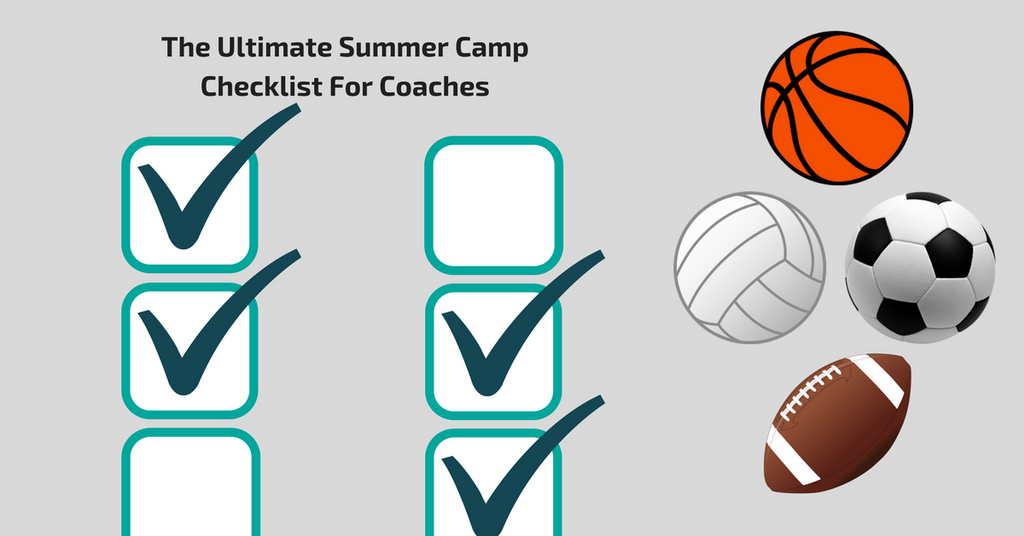Run the camp well and players and parents will leave knowing you are the leader of the program. Do it poorly and you will have a negative association that you will have to overcome later.
There is a solution to this. The right planning, creating expectations and execution will blaze the trail of success.
NBC Camps, based in Spokane, Washington, is a perfect example. For over 45 years they have been operating camps all over the world. They have nearly perfected the camp system, building an entire playbook in their Camp Binder. Every camp director receives a binder that guides them when they run camps. This is execution down to the last detail.
On a smaller scale, but as effective, we look to Caldwell, Idaho. The College of Idaho runs their youth camps with incredible attention to detail. All aspects, from camp promotion to the camp close, are thought out from every angle.
We hear it all the time. Often the difference between a good camp and a great camp is organization. Is there an agenda? Do we know what to expect? Are the kids sitting around or constantly involved?
The following checklist provides a proven blue print to set up and execute an exceptionally organized camp.
The checklist is free for you to download. You are welcome to share it. And if you find it helpful, do us a favor and like our Facebook page!
The Ultimate Summer Camp Checklist for Coaches
Secure a venue and date
If you want to run a camp you have to have a place and time for it. Start early. Some venues and locations need coordination with other coaches and teams.
You will also want to be sure to know who is in charge of unlocking the doors or gates and who is turning on the lights. If you don’t run the gym, you will be depending on someone else to do this. It is critical that you are on the same page.
Also, if you are independent, the venue will need you to have insurance. Find out their requirements and then talk to an agent that works in this area. We work with TPG insurance.
Promotion
Now that you have dates and a location, you have to get the word out. Be sure to include a specific CALL TO ACTION. In other words, tell them exactly what you want them to do. Here are the easiest ways we’ve found to promote your camp.
- Local community calendars – most papers and magazines have free calendars for sports stuff
- Feeder schools – if you are high school, hit the feeder junior high coaches, AD and PE teachers. If you are a junior high, hit the feeder elementary schools. If you are an independent camp, all schools would work but there may be some restrictions you will need to find out. A well designed (and approved) flyer is great for posting.
- Email your network – if you already have a group of kids that have attended be sure to email them. Email will be an important piece of information to collect later.
- Mail your flyer – like email, mail your flyer to all past participants. Secret bonus tip: include a self addressed stamped envelope for ease of mailing (if you have a paper registration form)
- Utilize your coaching staff – if you have coaches that also coach other teams, they are a great resource. Ask if they will invite their players to attend.
- Cross promote – if you are running a school camp, try partnering with one of the other coaches for extra reach. If you are the girls coach, partner with the boys coach and then reciprocate. Remember, the boys that want to play may have sisters and vice versa.
Registration
Decide how you want to do registration. Will it be through a website? Should the mail a registration form and check? Pay through PayPal email? Walk up to the door?
Whatever you choose, make it very clear in your CALL TO ACTION when you are promoting. Give deadlines if necessary. And definitely collect email addresses from everyone! This will build your future database of potential players.
Also, think about your player check in process. This is the first impression players and parents get of you. Don't wing it and risk setting the wrong tone for your camp.
Coaches
Secure your coaching staff well in advance. You already have an idea of who you want so talk to them early so they keep their schedule clear. These could be other adult coaches or older players in your program. Decide what you are going to pay them (or if there is another form of compensation) and lock them in as best as possible.
Also make sure that you are considering the player to coach ratio. When you know what that is, you can estimate how many coaches you need. Then be ready to make adjustments right as camp starts. If you have too many coaches are there any you are comfortable sending home if needed? If you don’t have enough, how can you get more in a hurry and who would they be? If this is your first camp, be ready to deal with both situations.
Giveaways (aka SWAG)
Most camps will give every player something as a cool camp reminder. It could be a water bottle, a shirt or even a basketball.
Whatever you are giving away, you will need to find out the lead time and decide on the quantities you want. The more you order the better price you will get. Be sure to get started in time. If it is a custom made item and there is shipping, this could mean a few weeks.
Daily Agenda
This is the core of what you are going to be doing so this must be be dialed in. Account for every minute but be ready to be flexible in case things change. A great way to do this is schedule in a couple of water breaks. Some camps have even made this one of their stations.
It may not be necessary to schedule out every day before you start. But, you definitely want to know where you want the players finish on the last day and build toward that.
Here’s an example for a beginner’s basketball camp. If the end goal is proper shooting technique then each day's agenda should reflect this. Build in skills like hand position on the ball, feet and balance, targeting and follow through. Schedule the first day out. Then create your second day’s agenda based on how the first day went. With experience you can even do this on a session by session basis. A dynamic agenda will create the best learning while keeping things running smooth.
Close Strong + Follow Up
At the end of camp, it is always great to bring everyone together and make a couple of closing remarks. Remind the kids (and parents) of everything they learned and how hard they worked. You want them to walk out of camp feeling great. This is also a great time to do awards if you want.
Following the camp, about four days later, send a quick email to all the players. Thank them for attending and get feedback for improvements. It is a nice touch that a lot of camps do not take advantage.
Bringing it to a close
By utilizing the seven items on this checklist you will be running a first class camp. It will serve your players well and will benefit your program in the long run. Planning ahead, creating the right expectations and executing your plan are the keys running an awesome camp.
Please include credit to www.selectprintingusa.com with this checklist.

